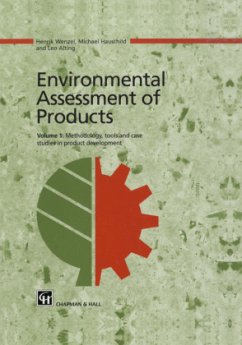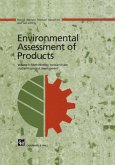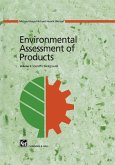The aim of this book is to support industry in their effort to design environ mentally friendly products. The book comprises a method and a manual for life cycle assessment of products and it includes examples of how industrial companies have used the method succesfully in the design of more environ mentally friendly products. The method has been developed over a period of four years under the Danish EDIP programme (Environmental Design of Industrial Products) by a team representing the Technical University of Denmark, five Danish industrial companies, the Confederation of Danish Industries and the Dan ish Environmental Protection Agency. The method is coheherent and opera tional and it is well documented by a large variety of examples including five different complex electromechanical products. It guides the user through the inventory and assessment of environmental impacts of products and shows how various products and design solutions during product development can be compared. The method is supported by a base of data for the assessments of environmental impacts and is thus designed as a tool which will make it possible for the user to start on life cycle assessment at once. The book also guides the user through the identification of environmental improvement potentials in the product and the setting of environmental specifications with in the general concept of overall commercial optimization. The partnership between industry, authorities and university has been highly fruitful.
'Environmental improvement of products and services during the entire life cycle is an important challenge and and in the future. Danish experience shows that large improvement potentials can be identified when focusing on environmental aspects during the development of new products. The Danish Environmental Protection Agency supports the EDIP methods and tools as a very useful instrument for this purpose and encourages the use of them, both within companies and as a basis for dialogue between companies, environmental authorities and other stakeholders.' -- Leo Larsen, Deputy Director-General, Danish Environmental Protection Agency
'The EDIP books have been used with success in three courses at the Norwegian Institute of Sciences and Technology in Trondheim in 1996/97. First of all, the good structure of the text, both in theory and case studies, has proved to be well suited to teach LCA-application to product design. Second, the books may be used separately according to the need of individual course modules. We strongly recommend the use of the EDIP books for teaching purposes.' -- Helge Brattebø, Professor, Norwegian University of Science and Technology, Trondheim
'Grundfos's certified and EMAS-registered environmental management system also covers our R&D. To ensure that all new products are as environmentally friendly as possible, all products are subjected to a Life Cycle Assessment in accordance with the EDIP method. In the charting of our em,issions, the EDIP concept also exerted a decisive influence on our construction of an efficient and flexible calculation system which is easy to update and to extend in step with developments in production.' -- Niels Due Jensen, Group Leader and President, Grundfos - Leaders in Pump Technology
'The EDIP books have been used with success in three courses at the Norwegian Institute of Sciences and Technology in Trondheim in 1996/97. First of all, the good structure of the text, both in theory and case studies, has proved to be well suited to teach LCA-application to product design. Second, the books may be used separately according to the need of individual course modules. We strongly recommend the use of the EDIP books for teaching purposes.' -- Helge Brattebø, Professor, Norwegian University of Science and Technology, Trondheim
'Grundfos's certified and EMAS-registered environmental management system also covers our R&D. To ensure that all new products are as environmentally friendly as possible, all products are subjected to a Life Cycle Assessment in accordance with the EDIP method. In the charting of our em,issions, the EDIP concept also exerted a decisive influence on our construction of an efficient and flexible calculation system which is easy to update and to extend in step with developments in production.' -- Niels Due Jensen, Group Leader and President, Grundfos - Leaders in Pump Technology
`Environmental improvement of products and services during the entire life cycle is an important challenge and and in the future. Danish experience shows that large improvement potentials can be identified when focusing on environmental aspects during the development of new products. The Danish Environmental Protection Agency supports the EDIP methods and tools as a very useful instrument for this purpose and encourages the use of them, both within companies and as a basis for dialogue between companies, environmental authorities and other stakeholders.'
Leo Larsen, Deputy Director-General, Danish Environmental Protection Agency
`The EDIP books have been used with success in three courses at the Norwegian Institute of Sciences and Technology in Trondheim in 1996/97. First of all, the good structure of the text, both in theory and case studies, has proved to be well suited to teach LCA-application to product design. Second, the books may be used separately according to the need of individual course modules. We strongly recommend the use of the EDIP books for teaching purposes.'
Helge Brattebø, Professor, Norwegian University of Science and Technology, Trondheim
`Grundfos's certified and EMAS-registered environmental management system also covers our R&D. To ensure that all new products are as environmentally friendly as possible, all products are subjected to a Life Cycle Assessment in accordance with the EDIP method. In the charting of our em,issions, the EDIP concept also exerted a decisive influence on our construction of an efficient and flexible calculation system which is easy to update and to extend in step with developments in production.'
Niels Due Jensen, Group Leader and President, Grundfos - Leaders inPump Technology
Leo Larsen, Deputy Director-General, Danish Environmental Protection Agency
`The EDIP books have been used with success in three courses at the Norwegian Institute of Sciences and Technology in Trondheim in 1996/97. First of all, the good structure of the text, both in theory and case studies, has proved to be well suited to teach LCA-application to product design. Second, the books may be used separately according to the need of individual course modules. We strongly recommend the use of the EDIP books for teaching purposes.'
Helge Brattebø, Professor, Norwegian University of Science and Technology, Trondheim
`Grundfos's certified and EMAS-registered environmental management system also covers our R&D. To ensure that all new products are as environmentally friendly as possible, all products are subjected to a Life Cycle Assessment in accordance with the EDIP method. In the charting of our em,issions, the EDIP concept also exerted a decisive influence on our construction of an efficient and flexible calculation system which is easy to update and to extend in step with developments in production.'
Niels Due Jensen, Group Leader and President, Grundfos - Leaders inPump Technology








